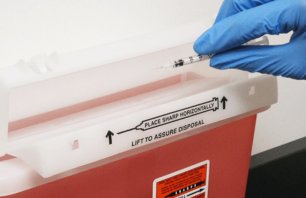The Cost Benefits of Sustainability
Across the health care landscape, organizations are recognizing that sustainability initiatives are not only needed to protect the environment. Eco-conscious practices can also heighten the integrity of an organization’s brand and decrease costs through increasing efficiency. According to a study financed by The Commonwealth Fund and the Robert Wood Johnson Foundation, hospital sustainability efforts could save the health care industry up to $5.4 billion over five years and $15 billion over 10 years. The study tracked nine U.S. hospitals and health systems that adopted sustainability initiatives in waste management, energy use and supply procurement, with each experiencing meaningful savings after making commitments to environmental sustainability.
By understanding how a green mindset can help control costs, health care organizations can embrace eco-friendly practices to transform their organization and reduce environmental impact for their immediate community and generations to come.
Looking Beyond Just Hospitals
While the above study pertains to hospitals and health systems specifically, all health care settings have an opportunity to realize cost savings from sustainability. Physicians’ offices, long-term care organizations, dental practices, as well as veterinary facilities can experience the advantages of making more environmentally prudent choices. Sustainability efforts can range in size and scope, but even the smallest initiatives—from recycling to more efficient lighting choices to patient outreach methods—make a positive difference in preserving the environment and safeguarding financial resources.
Shed Some Efficient Light on Your Sustainability Efforts
By switching to energy-efficient light bulbs, an organization can dramatically curb its costs. A single LED bulb is designed to last approximately 25,000 hours whereas a traditional bulb only lasts 1,200. A health care facility would need 21 traditional bulbs to equal the lasting power of just 1 LED bulb. When adding up the costs of additional bulbs, maintenance fees to replace them and higher energy costs (LED lights take less energy to run than incandescent options), the financial advantages of making the switch is clear.
Additionally, sensors that turn on lights only when needed can provide further cost savings in areas away from immediate patient care; such as staff bathrooms and breakrooms, storage rooms and other housekeeping areas.
Consolidate Paper Recycling
Health care providers need to stay diligent in protecting the privacy and security of their patients’ protected health information (PHI) and other personal information (PI). There can often be source and redundant PHI/PI printed on paper forms, reports, labels and other potentially protected information. These records must be carefully managed into secure destruction, which may include recycling streams. In addition, the daily operations of a medical facility produce paper without protected information that should be recycled. Work with your information technology team to address systems that create redundant printing and also consider consolidating your recycling methods with a provider that assures secure shredding of PHI. Reducing the number of paper recycling processes and vendors can economize recycling expenses while improving staff efficacy and your organization’s level of sustainability.
Limit Your Outbound Paper Trail
Private practices such as dentists and veterinarians, for example, can re-examine how they send appointment reminders. Instead of sending postcard appointment and checkup reminders, opt for automated digital options in the form of phone calls, text messages and emails. Not only will this get rid of paper and printing costs, it will curb the amount of material being sent to patients who may not be recycling.
Go Reusable When Possible
Stericycle’s partners who use reusable containers share in our success of eliminating the use of up to 600 disposable containers for every reusable sharps container used. This reduces the need to manufacture more containers helping conserve natural resources such as petroleum and keeps the disposable containers out of landfills. In 2018 alone, Stericycle diverted 56 million pounds of plastic from landfills through our Sharps Management Service. Using reusable sharps also reduces the amount of cardboard coming into the facility from disposable sharps packaging and reduces the amount of space needed to keep disposable stock on hand. If your sustainability efforts include switching to a reusable container service, you’ll remove the time spent by staff in purchasing and replacing one-time use containers and you can contribute to decreasing the amount of waste going to landfills by as much as 30 percent.
Include Sustainability in Your Organization’s Long-Term Objectives
Making the move to improve sustainability efforts starts with incremental changes and pays off year after year. By committing to more sustainable choices, health care organizations can experience cost advantages while showing their community that they preserve the wellbeing of their patients, staff and environment. It’s an investment in everyone’s future. Find out how Stericycle can help your organization reach its sustainability goals today.



